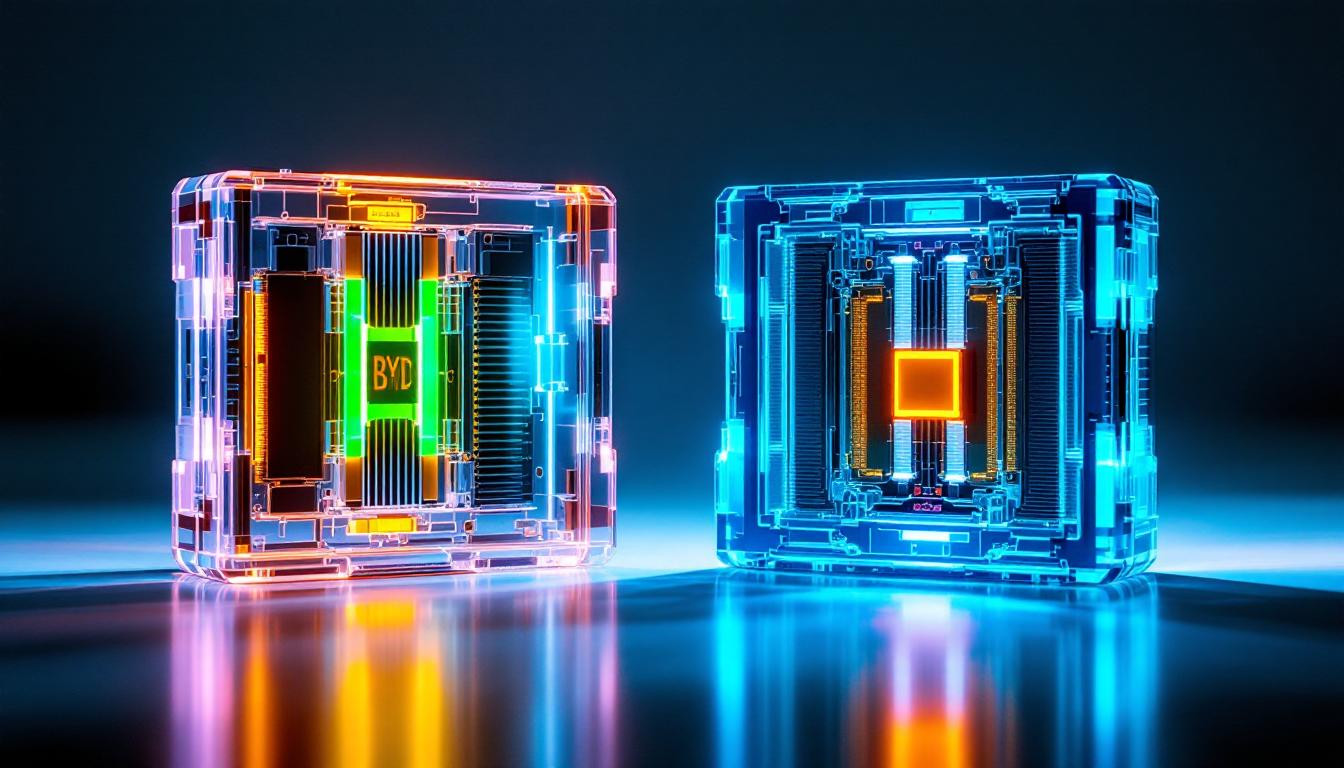The electric vehicle revolution is heating up this spring as BYD unveils a groundbreaking battery technology poised to challenge Tesla’s long-standing dominance. As the EV market accelerates into mid-2025, this Chinese automaker’s latest innovation could reshape the competitive landscape—offering faster charging times, improved safety, and reduced costs that might leave Tesla playing catch-up.
The blade that cuts through Tesla’s advantage
BYD’s revolutionary Blade Battery technology represents a fundamental shift in how we power electric vehicles. Unlike Tesla’s cylindrical 4680 cells using nickel-manganese-cobalt (NMC) chemistry, BYD has perfected their lithium iron phosphate (LFP) prismatic cells—prioritizing safety and affordability while addressing key consumer pain points.
“BYD’s ultra-fast charging system sets a new industry benchmark, far outpacing Tesla’s Supercharger capabilities,” explains Abhik Mukherjee, Research Analyst at Counterpoint Research. “Their ability to deliver up to 400km of range in just 5 minutes fundamentally changes the EV ownership experience.” This innovation directly addresses electric vehicle market trends showing consumer hesitation around charging times.
Technical breakthrough: Not just evolution, but revolution
The technical specifications reveal compelling differences between these competing technologies:
- BYD Blade Battery: 160 Wh/kg energy density, prismatic format, superior thermal management
- Tesla 4680: 241 Wh/kg energy density, cylindrical format, requires complex cooling systems
“BYD Blade cells showed half the energy losses per volume of the Tesla 4680 cell at the same C-rate,” notes battery researcher Jonas Gorsch from RWTH Aachen University. This efficiency advantage is like comparing a fuel-sipping hybrid to a powerful but thirsty sports car—both get you there, but with dramatically different resource consumption.
The cost equation that changes everything
Perhaps most threatening to Tesla is the cost differential. BYD’s Battery Technology vs Tesla shows a clear advantage—BYD’s batteries cost approximately €10 less per kWh than Tesla’s options. Multiply this across an entire vehicle battery pack, and the manufacturing savings become substantial.
This cost efficiency has already helped BYD overtake Tesla as the world’s largest EV manufacturer in early 2025, with their market position strengthening as these new battery technology innovations reach mass production.
Safety: The unsung hero of BYD’s approach
BYD’s CEO confidently states: “Our new Blade Battery will not just match but potentially outperform Tesla’s offerings by 2025.” This assertion is backed by impressive safety credentials—the LFP chemistry is inherently more stable and less prone to thermal runaway than Tesla’s NMC approach.
- Virtually zero risk of spontaneous combustion
- Enhanced structural integrity during collision testing
- Superior performance in nail penetration tests
What this means for the future of automotive technology
“As BYD pushes the boundaries of battery technology, other manufacturers will need to respond with their own innovations to remain competitive,” notes industry analyst Maria Guerra. “This is transforming from a two-horse race into an all-out technology sprint.”
For consumers, this competition translates to better vehicles at lower prices—a win regardless of which manufacturer ultimately claims the EV crown. It also creates fascinating investment opportunities in technology as the transportation sector undergoes this historic transformation.
As the spring 2025 automotive season unfolds, BYD’s battery breakthrough isn’t just challenging Tesla—it’s redefining what’s possible in electric mobility. The question isn’t whether Tesla will respond, but whether their response will be enough to maintain their premium position in an increasingly competitive electric future.
